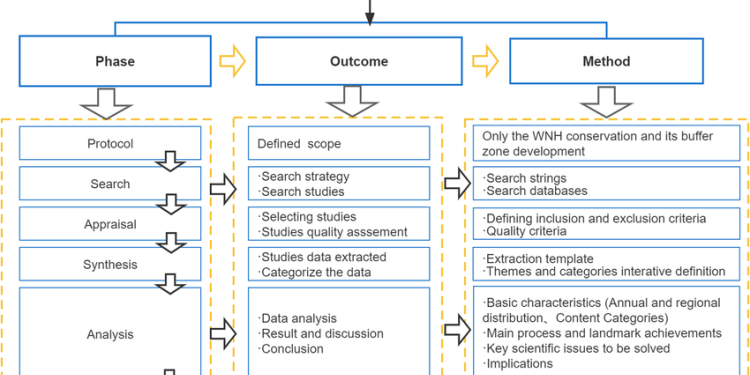By Shashikant Nishant Shama
The SALSA framework is a methodological approach designed to structure and streamline the process of conducting a literature review. It stands for Search, Appraisal, Synthesis, and Analysis. Each component corresponds to a step in systematically reviewing existing research to ensure that the review is comprehensive, critical, and useful for building knowledge.
The SALSA framework is particularly helpful for scholars, especially beginners, as it provides a clear roadmap for handling large volumes of literature and ensuring rigor in research writing.
1. Search
The first step involves identifying and collecting relevant literature. This is about systematically locating studies, journal articles, reports, and other academic works that are connected to the research problem.
Key tasks in the Search stage:
Define clear research questions or objectives.
Identify keywords, synonyms, and related terms to expand the search scope.
Select appropriate databases (e.g., Scopus, Web of Science, PubMed, Google Scholar).
Apply inclusion and exclusion criteria (e.g., timeline, geography, language, publication type).
Use Boolean operators (AND, OR, NOT) and filters to refine the results.
Keep track of search strategies for reproducibility.
Purpose: To ensure that the literature review is comprehensive and avoids bias by relying on a well-documented search strategy.
2. Appraisal
After collecting the studies, not all of them will be relevant or of high quality. This stage involves evaluating and filtering the collected literature based on pre-defined criteria.
Key tasks in the Appraisal stage:
Screen abstracts and titles for relevance.
Evaluate the methodological quality of the studies.
Identify gaps, limitations, and biases in the studies.
Exclude irrelevant, outdated, or poor-quality sources.
Use appraisal tools or checklists (e.g., CASP, PRISMA guidelines in medical fields).
Purpose: To ensure that only the most credible, relevant, and high-quality research is included in the review. This reduces noise and prevents misleading conclusions.
3. Synthesis
Once the relevant studies have been appraised, the next step is to combine and integrate findings from different sources.
Key tasks in the Synthesis stage:
Organize studies into themes, categories, or frameworks.
Compare and contrast findings across studies.
Identify trends, patterns, and recurring concepts.
Highlight contradictory evidence or debates in the literature.
Develop conceptual models or frameworks based on the findings.
Purpose: To build a coherent body of knowledge by integrating diverse findings, instead of just summarizing them one by one. This helps in identifying what is already known and what remains uncertain.
4. Analysis
The final stage is critical analysis, where the researcher goes beyond summarizing and synthesizing, to provide interpretations, implications, and evaluations.
Key tasks in the Analysis stage:
Critically assess the strength of existing evidence.
Discuss gaps in knowledge and areas for future research.
Relate the findings back to the research objectives or hypothesis.
Provide theoretical or practical implications of the literature.
Evaluate how the literature shapes or challenges the current understanding of the topic.
Purpose: To provide a critical, reflective, and value-adding perspective, ensuring the literature review contributes to advancing research rather than merely reporting past findings.
Provides a systematic structure for reviewing literature.
Helps manage large amounts of information efficiently.
Reduces the risk of bias in selecting or reporting literature.
Encourages critical evaluation rather than simple summarization.
Ensures transparency and replicability, which are key in academic research.
Suppose a researcher is studying the effectiveness of e-learning in higher education.
Search: Use databases like Scopus and Google Scholar with keywords “e-learning,” “higher education,” “student performance,” “online teaching effectiveness.”
Appraisal: Select peer-reviewed studies from the last 10 years, exclude non-academic blogs or outdated articles, and prioritize studies with strong empirical methods.
Synthesis: Group findings into themes such as student engagement, learning outcomes, teacher perspectives, and technology challenges.
Analysis: Critically assess whether e-learning truly enhances performance, point out contradictions (e.g., some studies show improvement, others show decline), and suggest areas where future studies should focus (e.g., long-term impacts or hybrid models).
Tabular representation of the SALSA literature review technique with steps, key tasks, and expected outcomes:
✅ This table can be easily adapted into a checklist format for students or researchers while conducting their literature reviews.
The SALSA framework (Search, Appraisal, Synthesis, and Analysis) is a practical and structured approach for conducting a systematic literature review. It moves researchers from a broad pool of information to a refined, critically evaluated, and insightful body of work. By following these four stages, scholars ensure that their literature review is transparent, comprehensive, and academically rigorous, forming a strong foundation for future research.
References
Dehalwar, K., & Sharma, S. N. (2023). Fundamentals of research writing and uses of research methodologies. Edupedia Publications Pvt Ltd.
Dehalwar, K., & Sharma, S. N. (2024). Social Injustice Inflicted by Spatial Changes in Vernacular Settings: An Analysis of Published Literature.
Dehalwar, K. S. S. N., & Sharma, S. N. (2024). Exploring the distinctions between quantitative and qualitative research methods. Think India Journal, 27(1), 7-15.
Grant, M. J., & Booth, A. (2009). A typology of reviews: an analysis of 14 review types and associated methodologies. Health information & libraries journal, 26(2), 91-108.
Mengist, W., Soromessa, T., & Legese, G. (2020). Method for conducting systematic literature review and meta-analysis for environmental science research. MethodsX, 7, 100777.
Sahoo, S. K., Tengli, M. B., Meeyo, H., Gaurav, S., & Singh, M. S. A Systematic Literature Review on Agrotourism Models (SALSA Approach): Mapping Research Trends and Key Factors.
Sharma, S. N., & Dehalwar, K. (2025). A Systematic Literature Review of Transit-Oriented Development to Assess Its Role in Economic Development of City. Transportation in Developing Economies, 11(2), 23.
Sharma, S. N., Kumar, A., & Dehalwar, K. (2024). The precursors of transit-oriented development. EPW Economic & Political Weekly, 59(16), 14.
Sharma, S. N. (2019). Review of most used urban growth models. International Journal of Advanced Research in Engineering and Technology (IJARET), 10(3), 397-405.




